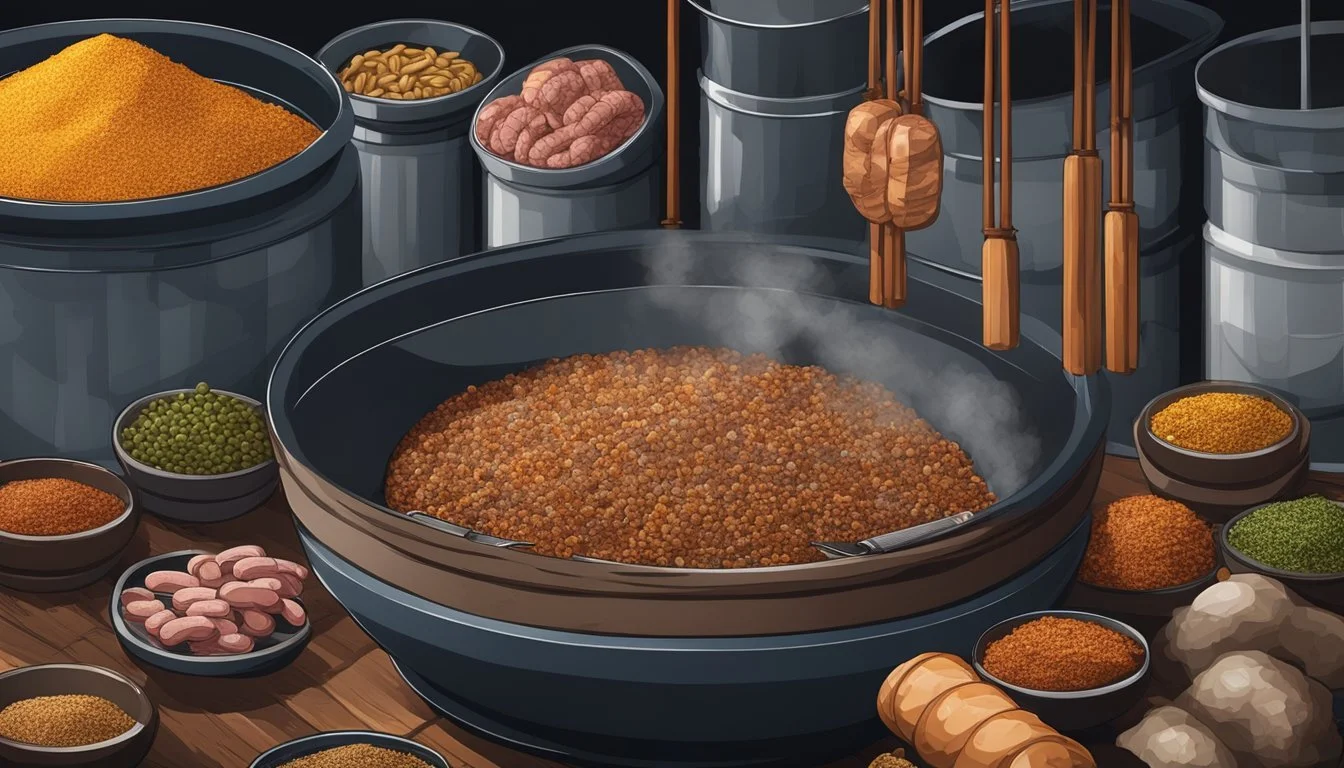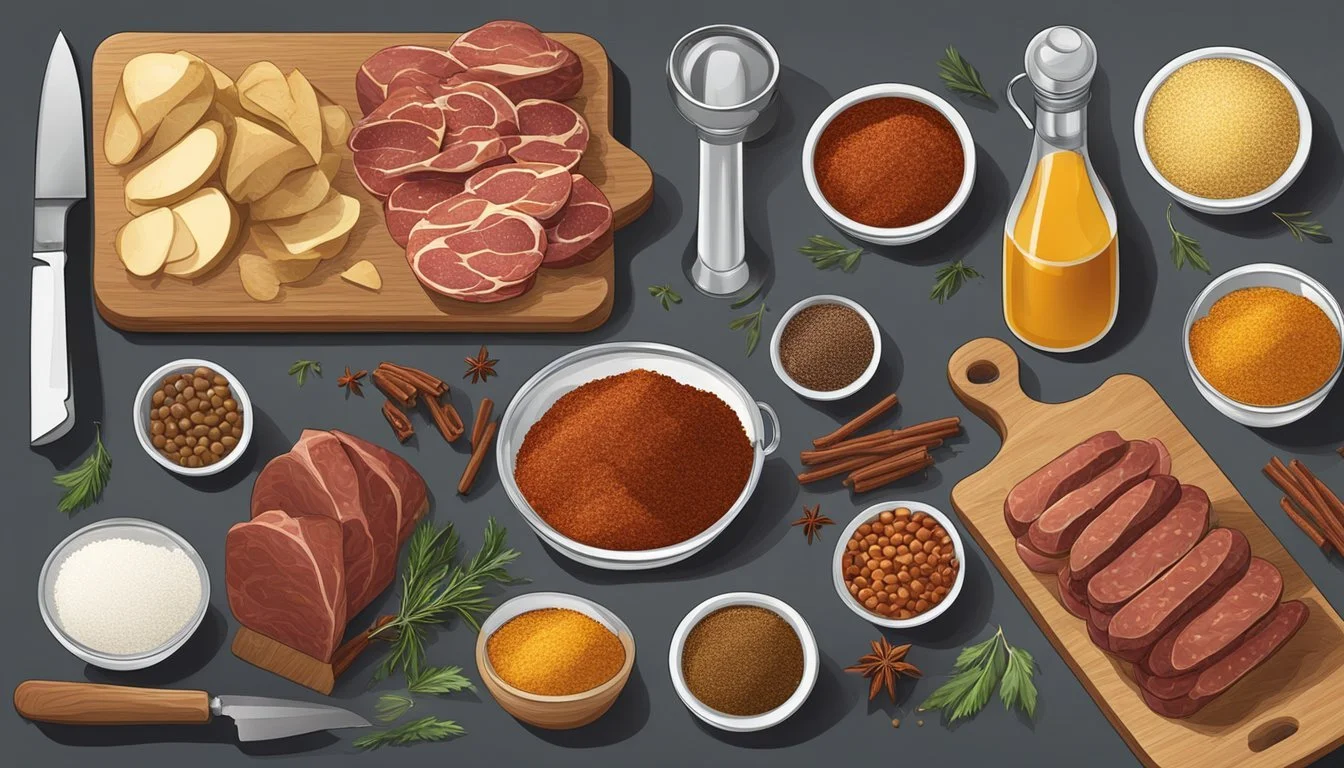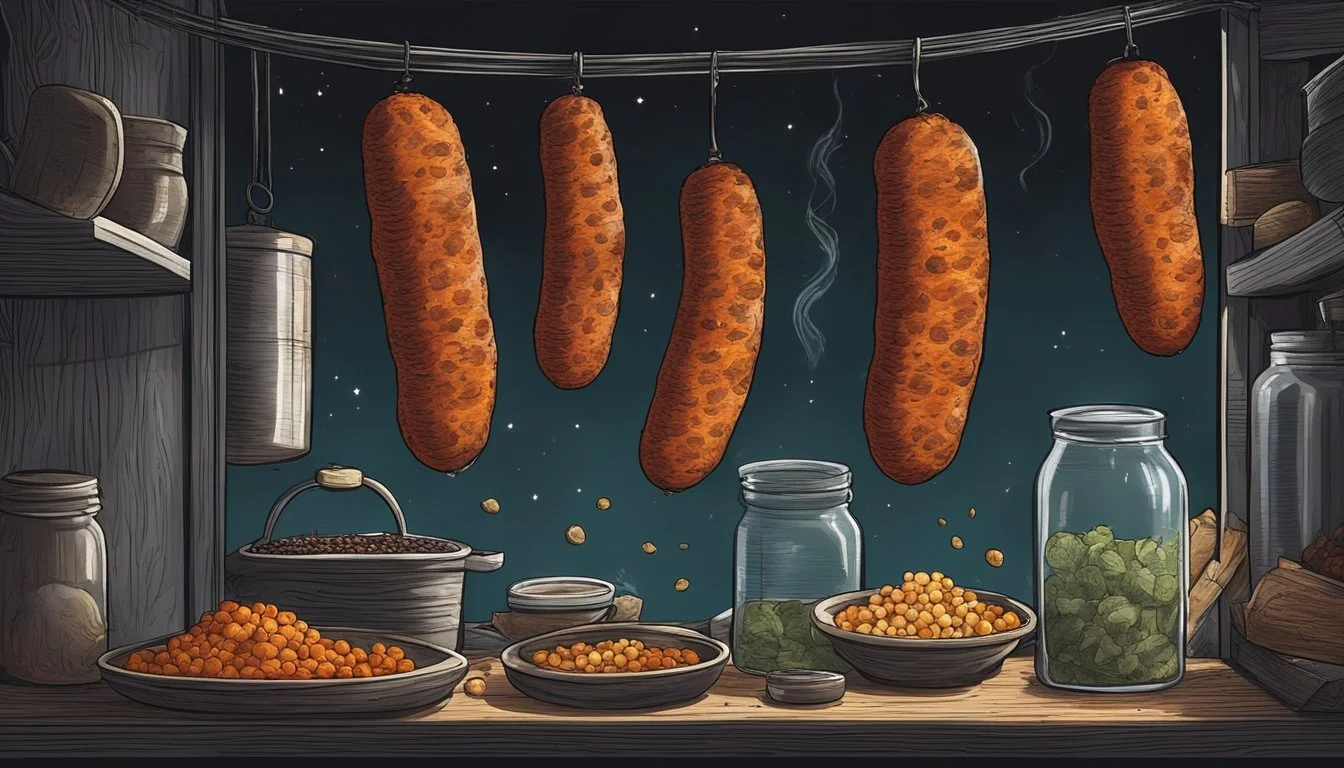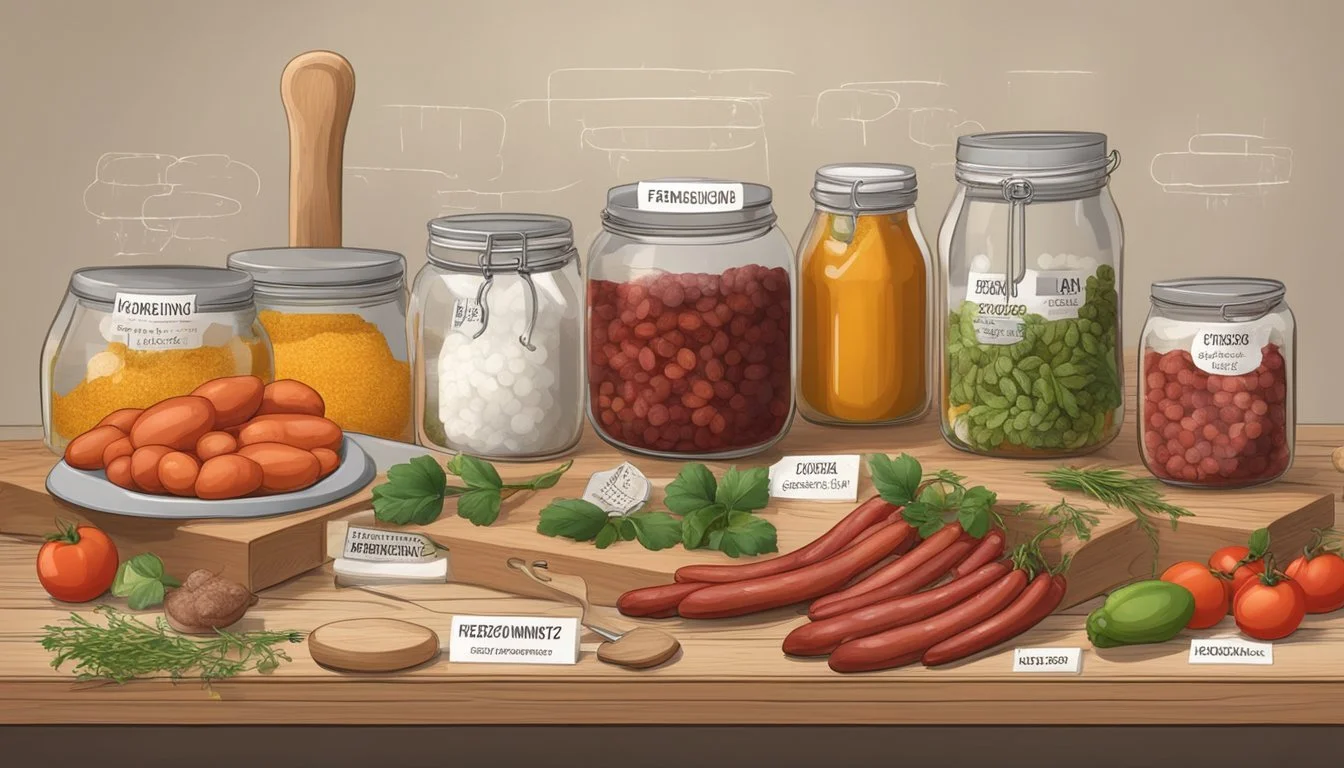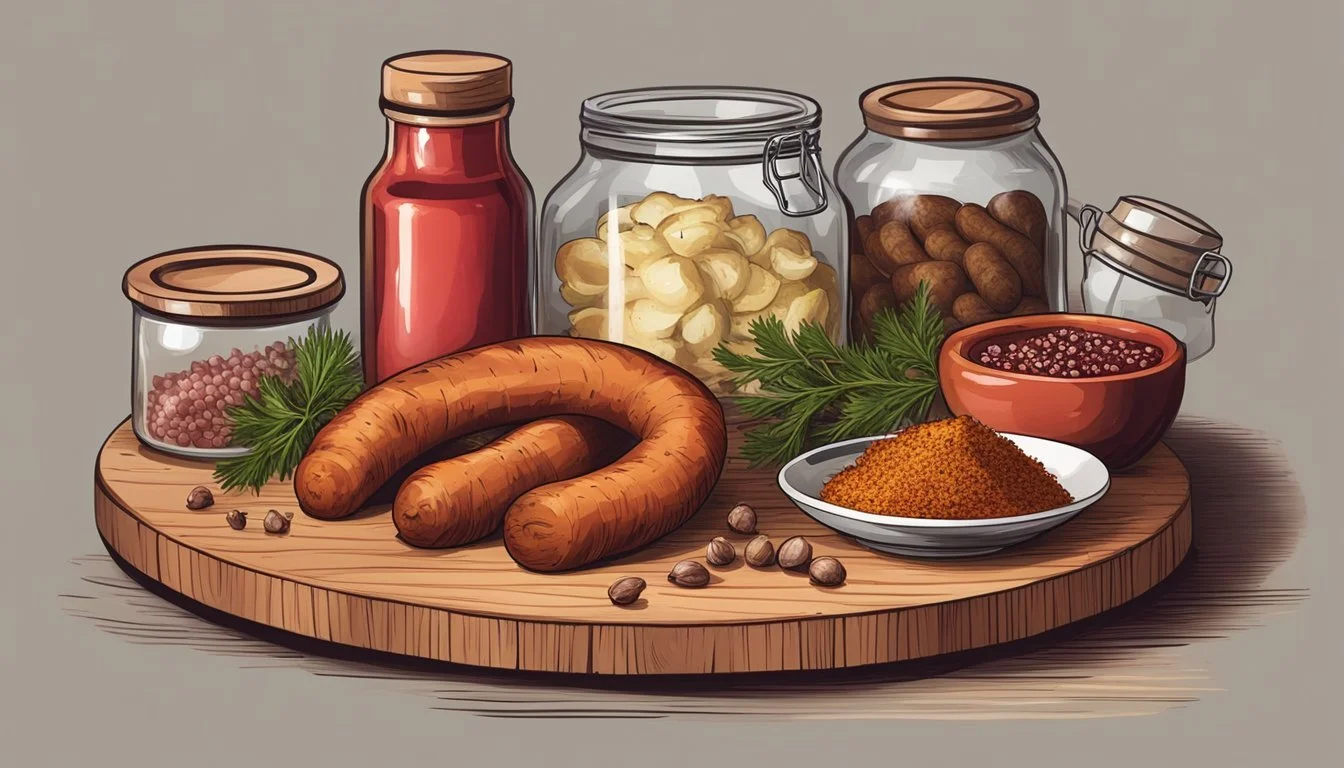How to Ferment Chorizo
Mastering Traditional Sausage Techniques
Fermented chorizo is a traditional Spanish and Latin American sausage known for its deep, complex flavors that develop through a process of fermentation and curing. This culinary practice harnesses the power of beneficial bacteria to transform simple ingredients into a rich, savory delicacy. To produce authentic fermented chorizo, one must begin with high-quality pork and a blend of fresh seasonings, including the characteristic paprika that imparts the sausage's vibrant color and smoky taste.
In creating chorizo, precision is paramount. The meat and fat are meticulously cleaned, cut, and then chilled before grinding to ensure the ideal texture. Spices are carefully measured and mixed into the ground meat, excluding components like non-fat milk powder and starter cultures, which are incorporated later in the process. Crafting chorizo requires not only a mastery of ingredients but also an understanding of environmental conditions. The fermentation stage demands a controlled environment with consistent temperatures and humidity levels to encourage the necessary bacterial activity and assure the safety and quality of the final product.
The art of fermenting chorizo bridges traditional practices with modern culinary techniques, yielding a sausage that brings bold, complex flavors to a variety of dishes. The process, steeped in cultural heritage, reflects an appreciation for the intricate ballet of time, temperature, and spice. Attempting to make fermented chorizo at home invites enthusiasts into a realm where patience and attention to detail result in an incomparably flavorful experience.
Understanding Chorizo
Chorizo is a type of sausage that is deeply ingrained in Spanish and Latin American culinary traditions. It is traditionally made from pork, although variations can include other meats. Key to its distinctive flavor is the generous use of spices, with garlic (What wine goes well with garlic?), paprika, and often smoked paprika being central to its taste profile. The salt acts not only as a seasoning but also as a curing agent.
There are two main types of chorizo: Spanish chorizo and Mexican chorizo. Spanish chorizo is typically cured or fermented and firm in texture, with a rich, smoky flavor derived from smoked paprika. It can be sliced and eaten without further cooking. Its Mexican counterpart, on the other hand, is usually fresh and meant to be cooked, characterized by more aggressive spices and a softer consistency.
Key Differences Between Spanish and Mexican Chorizo:
Spanish Chorizo: Cured or fermented, Firm texture, Sliced and eaten as is, Smoked paprika flavor
Mexican Chorizo: Fresh and cooked, Softer consistency, Typically requires cooking, More varied spice profile
To create fermented chorizo, one would incorporate a bacterial culture that helps in the fermenting process. The specific combination of spices, along with the fermentation, gives each chorizo its unique flavor and texture. Fermentation also acts as a preservation method, extending the shelf life of the sausage.
Understanding the foundations of chorizo allows for better appreciation and handling of the ingredient in various dishes, from simple tapas to complex stews. Adhering to traditional methods and quality ingredients ensures an authentic chorizo experience.
Fundamentals of Fermenting Sausage
Fermenting chorizo involves a complex interplay of bacteria, pH, and temperature. Control over these factors determines the tangy flavor and safety of the final product.
Role of Bacteria in Fermentation
The bacteria are responsible for transforming sugars into lactic acid during fermentation, which is essential for the distinctive tangy flavor and preservation of the sausage. Starter cultures—commercially prepared beneficial bacteria—are often added to ensure a consistent and safe fermentation process. The right bacteria not only enhance the flavor but also outcompete harmful organisms.
Importance of pH and Temperature
The pH level and temperature are critical in fermenting chorizo. The optimal pH level for sausage fermentation is between 4.6 and 5.3, creating an environment where beneficial bacteria thrive and pathogens are inhibited. Temperature control is equally crucial; typically, a temperature range of 20°C to 30°C (68°F to 86°F) is maintained to optimize bacterial activity and ensure proper fermentation.
Natural vs. Controlled Environments
The environment for fermenting sausage can be natural or controlled. Natural casings and traditional methods, where the environment's variables are not actively managed, can yield excellent results but are less predictable. A controlled environment, however, with precise humidity and temperature management, enhances consistency and safety. Modern techniques utilize specialized fermentation chambers where conditions are carefully monitored and maintained throughout the process.
Required Ingredients and Equipment
The quality of chorizo is contingent on the precise selection of meats, balanced spices, and the proper equipment. These are essential for creating authentic flavors and textures in fermented chorizo.
Selecting the Meat and Fat
For traditional chorizo, one should choose high-quality pork meat with a good proportion of fat. Approximately 70% lean meat to 30% fat is ideal for achieving the right texture and moisture. It's crucial to trim the meat of any unwanted parts, such as silver skin, sinew, or arteries, before the grinding process.
Choosing the Right Spices and Seasonings
The spice blend is what gives chorizo its distinctive flavor. Essential spices include Spanish paprika (pimentón), which imparts a smoky taste and red color, garlic powder, and salt for basic seasoning. Optional ingredients may include hot peppers or chili for a spicier sausage. Additionally, cure #1 (also known as Insta Cure #1 or Prague Powder #1), is necessary for safe fermentation, consisting of sodium nitrite that inhibits harmful bacteria growth.
Casings and Equipment Checklist
Proper equipment ensures a smooth processing and preparation of chorizo.
Casings: Natural hog casings, typically 32-36 mm in diameter, are preferred for their size, texture, and ability to breathe during fermentation.
Meat Grinder: A robust meat grinder is vital for processing the meat and fat into a fine mince.
Sausage Stuffer: A dedicated sausage stuffer is recommended for evenly filling the casings without air pockets.
Miscellaneous: Sheer preparation knives, cutting boards, and a weighing scale for ingredient measurement.
A complete equipment and ingredient checklist ensures that every stage from preparation to fermentation proceeds successfully, resulting in a chorizo that is both flavorful and safe to consume.
Preparing the Meat Mixture
The process of preparing the meat mixture for chorizo is critical as it lays the foundation for the flavor and safety of the finished product. Precision in grinding, mixing the correct proportions of curing agents and seasonings, and the proper incorporation of the starter culture are vital steps in this stage.
Grinding and Mixing Ingredients
Firstly, one must prepare the pork by removing any silver skin, sinew, and arteries. The meat is then cut into small strips or cubes. It is essential that the meat is very cold, thus it should be placed in the freezer until it reaches 32°F - 34°F. A grinder fitted with a 10mm plate is ideal for grinding the chilled meat to the desired consistency.
Equipment Needed:
Grinder with a 10mm plate
Temperature:
32°F - 34°F for chilling meat
Adding Curing Agents and Seasonings
After grinding, curing agents like cure #1 are added to the meat alongside key spices such as salt, garlic, pepper, and paprika to enhance flavor and ensure safety during the sausage's fermentation. The addition of dextrose is also important as it serves as a food source for the starter culture during fermentation.
Important Additions:
Cure #1: essential for safe curing
Dextrose: provides energy for the starter culture
Seasonings:
Salt and Black Pepper: according to taste
Paprika and Garlic: for signature chorizo flavors
Incorporating the Starter Culture
Finally, the starter culture must be delicately incorporated into the mixture. This culture is critical for initiating the fermentation process, which develops the unique tangy flavor of chorizo and secures an acidic environment for food safety. The mixture is to be mixed thoroughly to ensure even distribution of the culture throughout the meat.
Starter Culture:
Ensures fermentation and contributes to flavor and safety
Mixing:
Even distribution is crucial for consistency
Each step in the preparation of the meat mixture is methodically engineered to craft a chorizo that promises an authentic and safe culinary experience.
Stuffing and Curing the Sausage
Before Chorizo can undergo fermentation, it must first be properly stuffed and cured. These stages are critical for the development of flavor and the safety of the final product.
Filling the Casings
After grinding high-quality pork with a meat grinder, the seasoned meat blend is ready to be introduced into casings. Natural casings—often made from hog intestines—are preferred for their ability to breathe, enhancing the fermentation process. They're soaked in water to become more pliable and then loaded onto the nozzle of a sausage stuffer. The meat mixture is firmly pushed into the casings, ensuring no air pockets remain. Adequate stuffing is crucial to prevent the formation of harmful bacteria during curing.
Curing Process Explained
The stuffed sausages are then subjected to curing, which is a preservation process to prevent spoilage. The key ingredient in this phase is curing salt, typically referred to as cure #1 or insta cure #1. This special salt contains sodium nitrite that inhibits the growth of dangerous bacteria and imparts the distinctive pinkish hue to the cured chorizo. The sausages are hung in a controlled environment where the temperature and humidity are carefully regulated to support the curing phase—typically around 55°F (13°C) and 75-80% humidity for one to three weeks. During this time, beneficial bacteria work on the sausages, developing flavor and ensuring safety for consumption. After curing, the chorizo can be considered cured sausage or cured chorizo, ready for the next stage of fermentation.
Managing the Fermentation Stage
The fermentation stage is critical in creating chorizo with the desired flavor and safety. One must pay close attention to the humidity and temperature, as well as monitor the pH levels to ensure beneficial bacteria thrive.
Controlling Humidity and Temperature
To receive optimal results during the fermentation of chorizo, a controlled environment is essential. Humidity levels should be kept between 85-75% and temperature managed within a specific range — often between 53-59°F (12-15°C) for drying stages. Tools like the MK4 Thermapen can be employed to ensure precision in temperature monitoring.
Temperature Range: 53-59°F (12-15°C)
Humidity: 85-75%
Tool: MK4 Thermapen
Monitoring the pH Level
During the fermentation process, the pH level of the chorizo must be carefully monitored. It should decrease as fermentation progresses, indicating that the starter culture is active and beneficial bacteria are producing lactic acid. Safe and successful fermentation typically brings the pH to below 5.3.
Starter Culture: Instrumental in pH reduction
Target pH: Below 5.3
Significance: Ensures beneficial bacterial growth and food safety
Maintaining these parameters ensures that the chorizo undergoes proper fermentation, developing the right flavors and textures while also being safe to consume.
Drying and Aging the Chorizo
Drying and aging are critical stages in creating a flavorsome and well-preserved chorizo. Mastery of the environment and time period is crucial for the production of this distinguished cured, dried sausage.
Setting Up a Drying Environment
To produce quality Spanish chorizo, the drying environment must be controlled for optimal humidity and temperature. A stable humidity level between 70% to 80% is essential to prevent the sausage from drying out too quickly or developing harmful bacteria. Temperature should be maintained around 55°F to 60°F (13°C to 15°C) to support gradual drying. One may use a dedicated charcuterie chamber or modified appliance to replicate these conditions at home. For a more robust flavor, including Pimenton de la Vera, a smoked Spanish paprika, ensures the chorizo develops its signature taste during the drying process.
Determining the Aging Period
The aging period is contingent on the chorizo's size and desired dryness. A general guideline suggests a minimum aging period of 1 to 2 months, although larger sausages may require more time. To assess readiness, one should check for a firm, even consistency and a rich, red color imparted by the pimenton. Regular monitoring and tasting can help pinpoint the precise moment when the chorizo has reached peak quality.
Quality and Safety Checks
Proper quality and safety checks for fermented chorizo ensure the final product is both delicious and safe to consume. These checks are critical at various stages of the fermentation process.
Visual and Texture Inspection
Upon initial examination, one should observe the chorizo's color, which should be uniform throughout the sausage. Any discoloration could indicate spoilage or uneven curing. The texture is equally vital; the sausage should have a firm yet slightly springy texture when gently squeezed. An over-soft or mushy texture could signal improper fermentation. A sausage pricker can be used to expel any air pockets formed during casing, as they might lead to unwanted bacterial growth.
Verifying Fermentation Success
The success of fermentation can be primarily gauged through pH measurements and aroma profiles. The target pH for fermented chorizo is typically below 5.3, which indicates sufficient acidification, inhibiting the growth of harmful bacteria. A reliable instrument such as the MK4 Thermapen should be used for accurate pH readings. Furthermore, the aroma should be pleasant and characteristic of chorizo, without any off-putting or sour smells. An undesirable aroma can signal a failed fermentation process or contamination.
Storing and Serving the Chorizo
When fermenting chorizo, maintaining optimal storage conditions is crucial to preserving its complex flavors, while the right serving suggestions can enhance its enjoyment.
Optimal Storage Conditions
Fermented chorizo is best kept under specific environmental controls to ensure the quality and safety of the sausage. Storage involves keeping the chorizo in a cool, dry place, ideally within a refrigerator that maintains a consistent temperature. Once cured, chorizo should be wrapped in butcher paper or placed in an airtight container to protect against moisture and contaminants. For long-term preservation, refrigeration between 32°F to 40°F (0°C to 4.4°C) is recommended.
To prepare chorizo for freezing, double-wrap the sausage in cling film followed by a layer of foil to prevent freezer burn. It can be stored in the freezer ideally at 0°F (-18°C) or below. The chorizo should be thawed gradually in the refrigerator before consumption to maintain its texture and flavor integrity.
Serving Suggestions and Pairings
Chorizo's robust flavor profile makes it versatile in pairing with various accompaniments. One may serve thin slices of chorizo at room temperature to allow the flavors to fully develop. Pairing it with crusty bread, such as a baguette, and a drizzle of olive oil can complement the rich taste of the sausage. A platter that includes chorizo might also feature cheese selections, such as manchego, to create a harmonious balance.
For beverages, fermented chorizo pairs well with alcoholic drinks that can match its intensity. A full-bodied red wine or a hoppy beer such as a pale ale can stand up to the spiciness and deep flavors of the chorizo. Additionally, consider offering fruit preserves or mustard on the side to add a sweet or tangy contrast that cuts through the fattiness of the meat.
Creative Recipes and Uses
When incorporating fermented chorizo into various dishes, the robust flavors complement a range of ingredients. Here are some inventive ways to use this versatile sausage:
1. Chorizo and Eggs Breakfast Burrito:
Scramble eggs and chorizo together.
Wrap in a warm tortilla with cheese and avocado slices.
Drizzle with olive oil for added richness.
2. Spanish Chorizo Pincho:
Skewer slices of chorizo with chunks of bread and cheese.
Grill briefly, allowing the cheese to melt slightly.
3. Chorizo Bread Pudding:
Cube stale bread and toss with cooked chorizo and cheese.
Mix with beaten eggs and bake until set.
4. Sautéed Chorizo and Olive Oil Appetizer:
Sauté chorizo in olive oil until crispy.
Serve with crusty bread to soak up the flavorful oil.
Eggs: Suggested Combination - With chorizo in a frittata or omelette
Cheese: Suggested Combination - Melted over chorizo on toast or in stuffed peppers
Bread: Suggested Combination - As a base for an open-faced chorizo sandwich
Olive Oil: Suggested Combination - For frying or drizzling over chorizo dishes
By integrating chorizo into these dishes, chefs can elevate the staple ingredients to create memorable meals. Whether for breakfast, a quick snack, or a hearty meal, chorizo's strong, spicy profile enhances every dish it's added to.
Understanding the Cultural Significance
Chorizo occupies a revered place in the culinary traditions of Spain, Portugal, and Latin America. In Spain and Portugal, this cured meat is more than a food item; it represents a confluence of cultures, blending the ancient techniques of preservation with the distinctive flavors of Spanish paprika. Mexican chorizo, differing from its Iberian cousin, tends to be fresh rather than cured, and often incorporates local spices, making it a vivid representation of the region's palate.
The tradition of chorizo making binds communities with a shared heritage, reflecting both a practical need to preserve meats and a creative expression of regional taste profiles. The use of Spanish paprika, either picante (hot) or dulce (sweet), not only imparts a deep red color but also infuses the chorizo with a flavor that is unequivocally Spanish. Much like salami in Italy or kielbasa in Poland, chorizo is a symbol of national pride and gastronomic identity.
Spain: Meat Type - Pork, Preservation Method - Cured, Paprika Type Used - Picante/Dulce
Portugal: Meat Type - Pork, Preservation Method - Cured, Paprika Type Used - Mild/Hot Varieties
Latin America: Meat Type - Pork/Beef, Preservation Method - Fresh, Paprika Type Used - Local Varieties
By fermenting and curing meats, societies could extend their shelf life. This process led to the development of a vast array of cured meats (What wine goes well with cured meats?). In modern times, the art of chorizo fermentation continues to be passed down from generation to generation, safeguarding these traditional flavors for future enjoyment. Chorizo, irrespective of its regional variant, is integral in festivities, daily meals, and as a culinary treasure that narrates the story of a people through its robust and savory notes.

